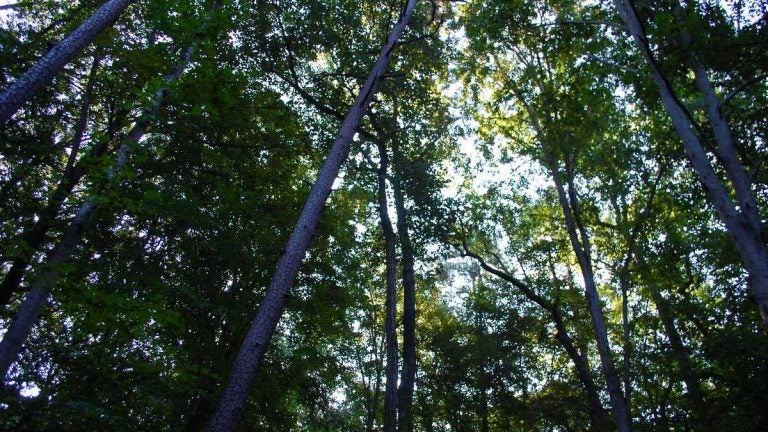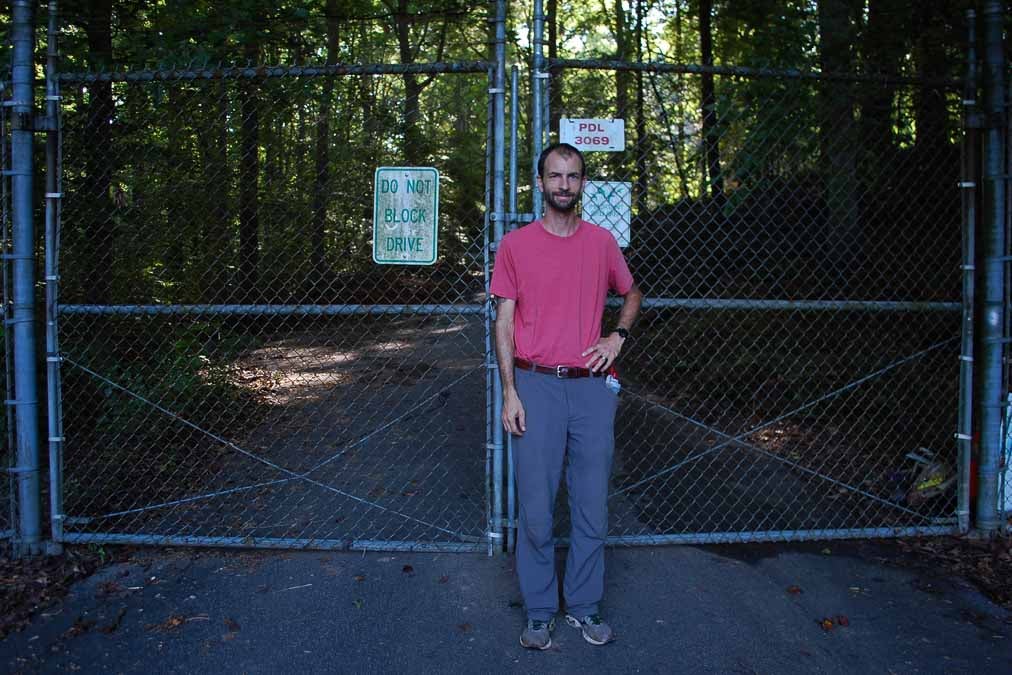Fighting for preservation in a wooded natural history museum
Listen 4:02
Fernbank Forest’s tree canopy stretches 156 feet into the air. Many of the trees have been able to live two or three hundred years. (Stephannie Stokes/for WHYY)
Eli Dickerson and I start at the edge of the unusual museum collection he manages.
This piece is a part of our show on Natural History Museums. Take a look at the rest of our stories here.
Eli Dickerson and I start at the edge of the unusual museum collection he manages.
“So I was thinking we could sort of follow the creek into the heart of the forest,” Dickerson said. “There’s a nice loop we can do around there.”
We’re staring at 65-acres of old growth forest. They belong to the Fernbank Natural History Museum. Dickerson, a bearded, hiker-looking man, is the museum’s ecologist.
As I follow him into the forest, he shows me how these woods are like one big exhibit into how this region looked, long before European settlers arrived.
We look up at the thick tree canopy stretching 156 feet in the air. Many of the trees have lived two or three hundred years, Dickerson said, about as old as species here get.
Later, we check out the forest floor filled with dozens of native plants. Dickerson spots seedlings of beech and sweetgum trees and a plant full of thorns called Devil’s Walking Stick.
Then, we go even lower. Dickerson bends down next to an interactive part of the exhibit–a series of little wooden doors built into a hillside.
He opens one and we see the natural dark topsoil that helps plants grow.
“This deep topsoil tells us something about people and the history of people in Fernbank Forest, Dickerson said. “This was never extensively logged or farmed.”
In most places, that kind of human activity has washed the natural topsoil away, Dickerson said.
But while this lush forest may have never been cut down by people, it’s hardly remained untouched. Dickerson takes me to a pond with a slope on the opposite side, which is the reason for the forest’s name, Fernbank. Once it was filled with different species of native ferns. But now we’re looking at a hill that’s mostly brown with just a little green.

“So this mosaic that you see on the hillside,” Dickerson said. “Everywhere that is brown used to be solid green with English Ivy. An invasive introduced by people, over a hundred years ago. At the Fernbank Forest, it has crowded out at least a dozen native plants.
The museum is fighting back, Dickerson assures me. He leads volunteers and staff in, ridding the forest of these familiar enemies, including English Ivy as well as Microstegium and monkey grass. That makes this collection different from other museum artifacts.
To protect the ancient forest, they can’t simply let it be. “If I was to stop all those ecological restoration activities, within a few months to a few years, we would see English Ivy, crawling back up the trunks of the trees into the crowns,” Dickerson said.
“Eventually, the trees would die. It would completely cover the forest floor. So that would have a ripple effect.”
Keeping invasive plants at bay may become even more difficult with a warming climate, Dickerson said. A whole new array of these species from farther south could find their way into the forest.
Still, he isn’t deterred. He sees his work as more than just a daunting gardening project.
“Although at face value, you might say this looks like the forest in my backyard or down the street,” Dickerson said. “I think there’s a different feeling here. You kind of slow down and think about everything that has happened here in this forest over the years and centuries and millenia.”
After wandering a bit, we reach the edge of the woods again and we say our goodbyes.
Dickerson’s excited to get back to work in the forest.

WHYY is your source for fact-based, in-depth journalism and information. As a nonprofit organization, we rely on financial support from readers like you. Please give today.




